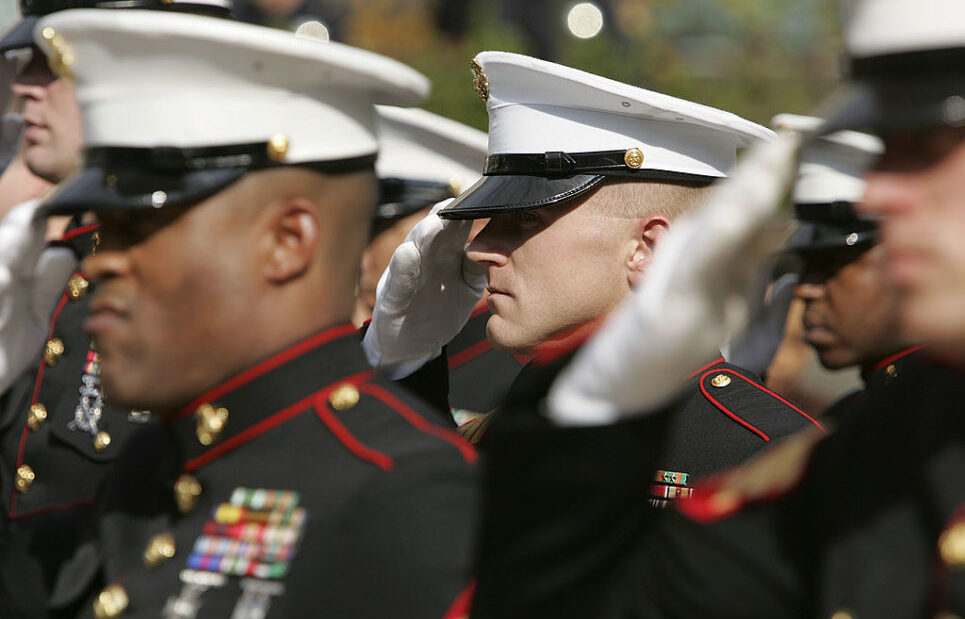The US Marine Corps is well-over two centuries old, and the legendary leathernecks who’ve made up its ranks have a long and distinguished tradition. However, as with any long-standing military organization, the service has some fabricated history. The following are some “facts” about the USMC that are actually myths!
The ‘Devil Dogs’ nickname didn’t actually come from the Germans
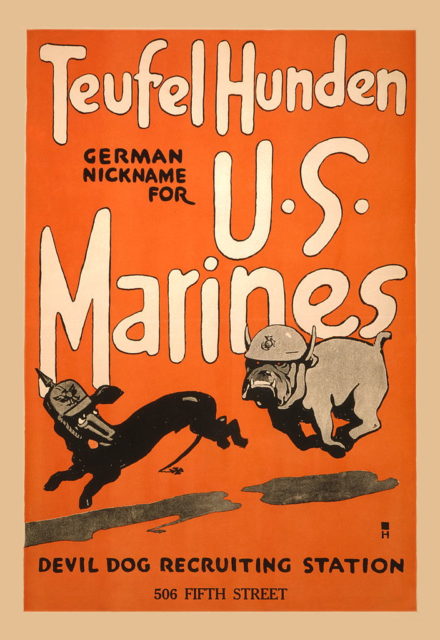
The moniker “Devil Dogs” – or “Teufel Hunden,” in German – encapsulates much of what the US Marine Corps is about; it hints at the ferocity and toughness of the service. According to legend, German soldiers gave Marines the moniker during the First World War, having been impressed by their drive during Battle of Belleau Wood.
It’s undoubtedly impressive to receive this sort of nickname from an enemy combatant. However, upon further investigation, the rumors don’t appear to be true.
Patrick Mooney, a representative from the National Museum of the Marine Corps, is reported as saying, “We have no proof that it came from German troops though tradition says it came from German troops referring to Marines. There is no written document in German that says that the Marines are Devil Dogs or any correct spelling or language component of ‘Devil Dog’ in German.”
It also appears that the nickname for the USMC had appeared in print before the Battle of Belleau Wood.
The 4th Marine Regiment isn’t banished overseas
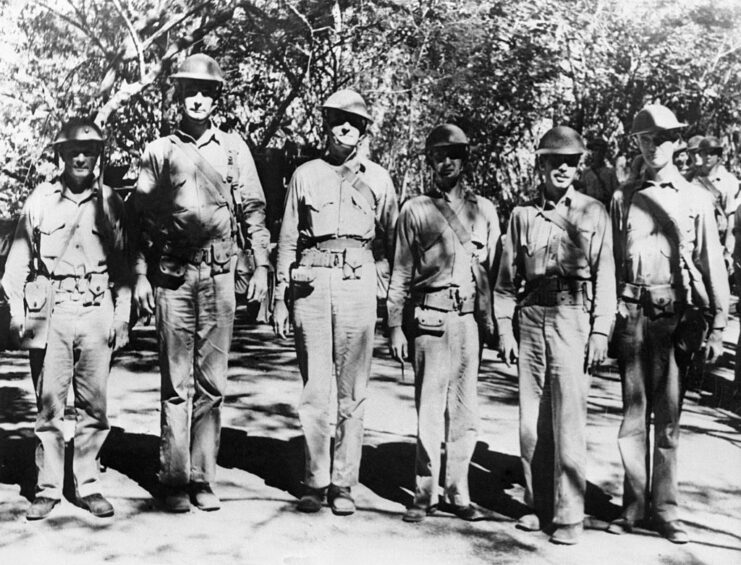
One prevalent myth within the US Marine Corps is that the 4th Marine Regiment is based overseas not because they want to be, but because they were banished. The legend states that the regiment was banned from returning to the United States because of Col. Sam Howard’s order that the Marines burn their regimental colors, along with those of the nation, following their surrender to the Japanese in the Philippines in 1942.
Since the Second World War, it’s been said the 4th Marines are doomed to wander the Pacific for the dishonor they brought upon their country for surrendering, but that’s not actually the case. Having been reinvented, deactivated and reactivated several times since then, the regiment has served with distinction, accepting Stateside battalions into their ranks in their battle to protect their maritime assets.
Has the US Marine Corps ever surrendered to the enemy?
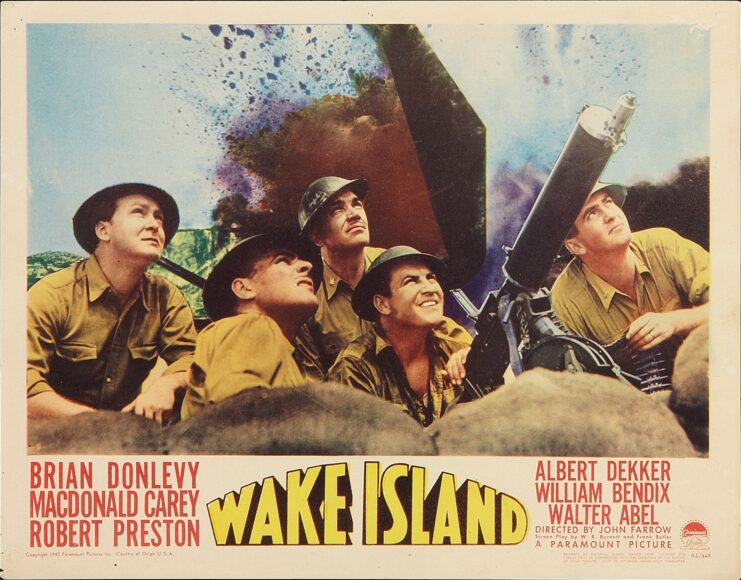
There is non-stop competition between all branches of the US military, and the US Marine Corps is often thought of as the fiercest group. To promote this idea, recruits and trainees are often told Marines have never surrendered on the battlefield. However, this is untrue.
Following the Japanese attack on Pearl Harbor in December 1941, a small group of Marines fell under siege on Wake Island, a tiny atoll in the Pacific. For two weeks, the group fought tenaciously; they were able to sink enemy ships and destroy aircraft.
In the end, however, they didn’t have the numbers to compete with the Japanese, and the group’s commander, Maj. James Devereux, surrendered on December 23, 1941. A film about the heroism of these Marines on Wake Island was released the following year.
Commemorating the Battle of Chapultepec
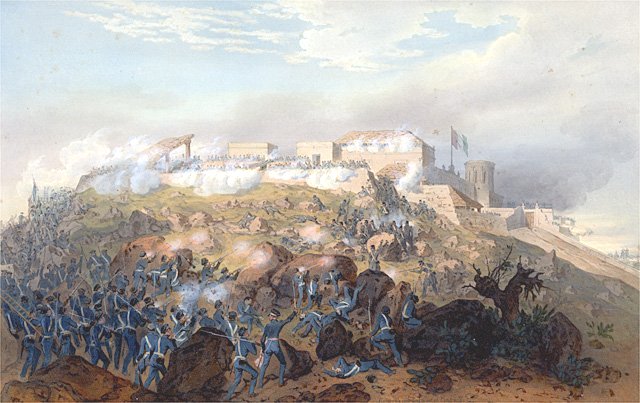
The Battle of Chapultepec in 1847 is one of the most famous in US Marine Corps history. Occurring during the Mexican-American War, it saw US troops attempt to enter Mexico City, and the fight is an important part of American and Mexican history.
In Mexico, Niños Héroes, six cadets who refused to surrender to the Americans, are revered. The engagement was also legendary for the United States. Despite being outnumbered, the American forces were victorious. The battle’s memorialized in the opening lines of the Marines’ Hymn.
According to legend, the blood-red stripe on the USMC’s dress blues honors the battle. That story, however, is untrue. It turns out that Marines had sported the stripe years before the engagement happened, with Beth L. Crumley of the US Marine Corps History Division telling We Are The Mighty, “While a wonderful story, and one that is taught to incoming recruits, it is only a story.”
The US Marine Corps’ actually birthday
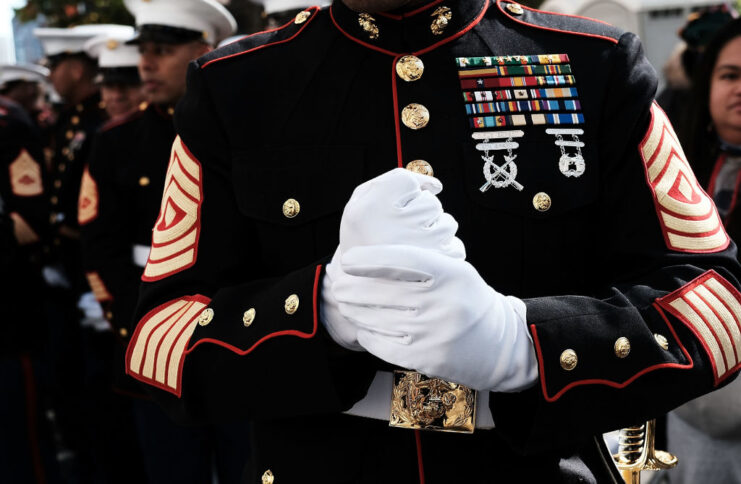
The date of the birth of the US Marine Corps is highly disputed. The service was formed for the first time in 1775. The Continental Congress created two battalions to serve in the Revolutionary War. However, once the conflict was over, they were disbanded.
Between 1783 and ’98, there was no USMC. On July 11, 1798, the service was officially formed through an act of Congress, and for the next century, this date was recognized as its birthday.
More from us: Facts About ‘Das Boot’ – The Most Realistic Submarine Movie Ever Released
In November 1921, however, Gen. John A. Lejeune issued an order making November 10, 1775, the USMC’s official creation date. While the order was technically correct, there are 15 years where Marines didn’t serve the United States.
